Editor’s note: We offered this blog as a platform to the DfG course participants who are documenting the DfG course for readers to get a glimpse of how things went. This is one such post by Project Piazza Team 1.
The journey has begun!
We are twenty four ambitious students with various backgrounds selected to take on the mission to bring positive change to the government.
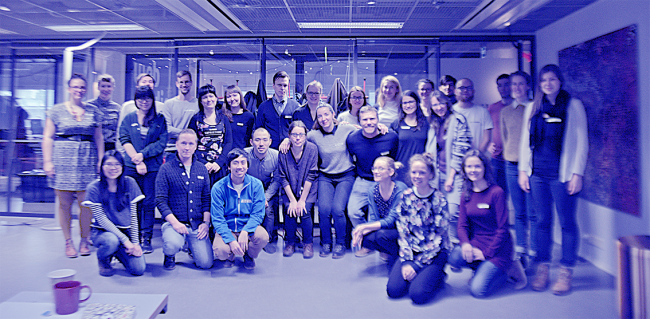
The application process of Design for Government (DfG) 2015 was not by the order of online registration. Instead, each applicant had to choose to apply either as a team by forming a group of four or as an individual by successfully conducting an assignment. We were arranged into six teams that were further grouped into three super teams for the three projects commissioned by Finnish government.
Each super team takes on one challenge, and will have one highly experienced tutor throughout the whole course. The idea is to help us make strategic choices for user study. Project Piazza, commissioned by the Prime Minister’s Office (VNK), will be tutored by the researcher and service designer Juha Kronqvist. The teams in the Primary Producer’s Notification project, commissioned by the Ministry of Agriculture and Forestry (MMM), will be under the supervision of ethnographer Taneli Heinonen. The design ethnographer, Boris Zilberman, will help the teams under School Fruits and Vegetables Scheme project, also commissioned by MMM.
Introduction day
The course started with the introduction day, practicalities, schedule and course structure.
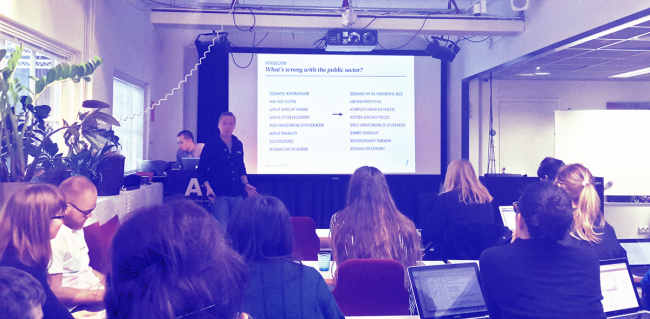
The first assignments included finding a space that we can use for the coming 14 weeks, interviewing each other in our team, defining roles, and having a dinner together. The idea was for individual teams to bond and to come up with a common starting points while defining the expertise and interest areas to grow during the course.
We started preparation for the workshops that would happen in a week. Seungho and his teaching assistant have been inviting stakeholders from the ministries and authorities even before course began in order to give us a head start for our user study, and it was our goal to make the most out of it.
Kick-off day
The second contact session of DfG was a combination of a panel discussion event, followed by the aforementioned workshop. The panel discussion aimed to motivate us and to introduce the importance of redesigning governance from reactive to proactive while opening up a discourse on such actions for the Finnish government. The 170 attendees of the panel discussion included civil servants from nine ministries. In the afternoon, we ran six workshops concurrently using different parts of Aalto University Arabia Campus. Merely seven days in and a load of hard work, we were ready for the first contact with the clients and stakeholders and cannonballed themselves into the world of designing for government.

Panel discussion
The panel discussion started with opening words by Seungho Lee, the responsible teacher of the course and the host of the event. He introduced some existing initiatives on a relationship of design and the public sector and how systems thinking could be used to identify the most vulnerable and powerful links. The moderators of the panel were Seungho Lee with Juha Leppänen, the Head of the Democracy and Capabilities in the Nordic think tank, Demos Helsinki.
Panelist Marco Steinberg, the founder of Snowcone and Haystack, gave an eye opening speech about how we need to challenge the way the world is given to us. He encouraged us to refresh our mindsets and start focusing on designing the future rather than improving the past. According to him “We need a smarter government, not a smaller one.” Other panelists were Kaisa Lähteenmäki-Smith from the Prime Minister’s Office and Turkka Keinonen the head of Design department of Aalto Arts.
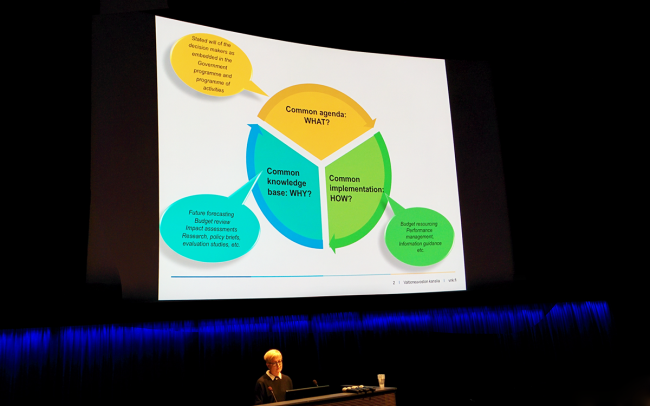
The panelists discussed about designers’ possible roles in the process of renewing the public sector. Can designers make visible something that the government just doesn’t see? Keinonen saw a possibility for designers to create crises and Juha Leppänen proposed that designers could act as facilitators responding to the crisis. Although design can create segmentation by emphasising different groups, it can also help in creating coherence and shared experiences.
The discussion raised questions of how to identify the best ideas and practices and how democracy could be more qualitative. Multidisciplinary was seen as a possibility to open new views within decision and policy making. Lähteenmäki-Smith brought up the challenge of the governance structure being based on silos. New governmental culture supporting multidisciplinarity needs to be created to come up with the needed balance.
Steinberg asked designers to step out of the comfort zone and work on “unsexy things” . Finland’s legacy of success in the public sector was seen as major barrier for change. The transition towards a smarter government would not happen if the problems with the current one are not recognised.
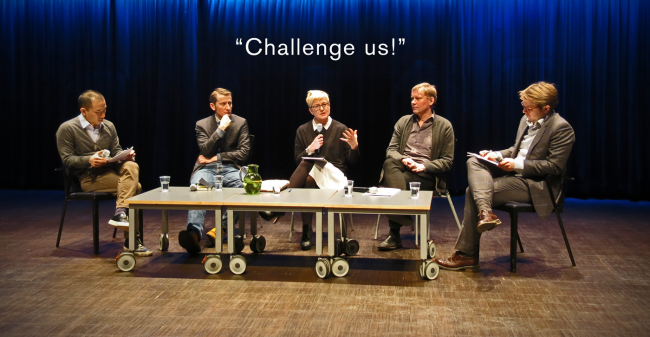
Workshop with Atlas Game
The seminar day continued with the workshops aiming to map the project objectives, motivations and processes in co-operation with the stakeholders and clients. To help with project planning, we were introduced to use the ATLAS Game – a workshop tool developed in the Aalto University that helps to create an conversational environment for co-creation and co-development of services.
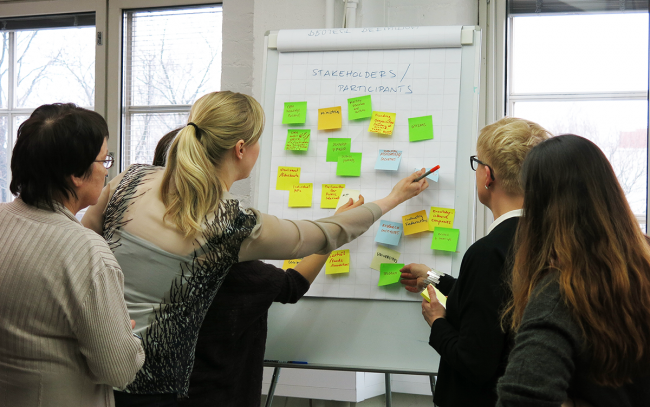
In picture: Seija Koppinen, Nelli Hankonen,Laura Uusitalo, Kaisa Lähteenmäki-Smith and Maritere Vargas. Photo by Team Piazza 1
From getting a better perspective of their problem to making connections with the stakeholders and clients, the workshop opened many doors for the us. We are now fiercely working away to catch the opportunities that were newly presented to us. After an intensive week, we are now taking off into previously unmarked territory, drawing the map as we go in hopes that someday, between the valleys and the peaks, we will find a path that can bring positive change to how our government works.
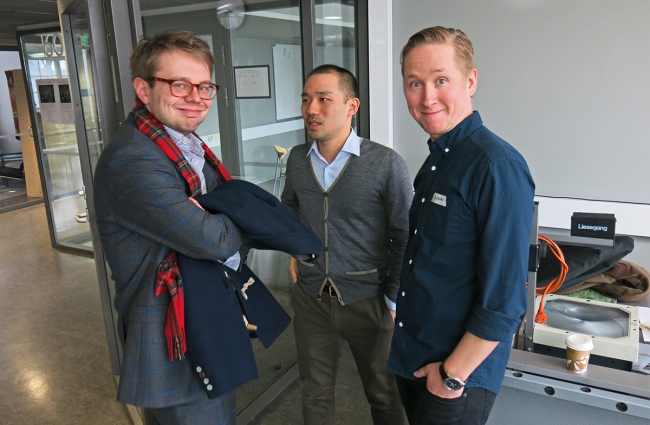
In the picture: Juha Leppänen, Seungho Lee and Juha Kronqvist. Photo by Piazza Team 1
